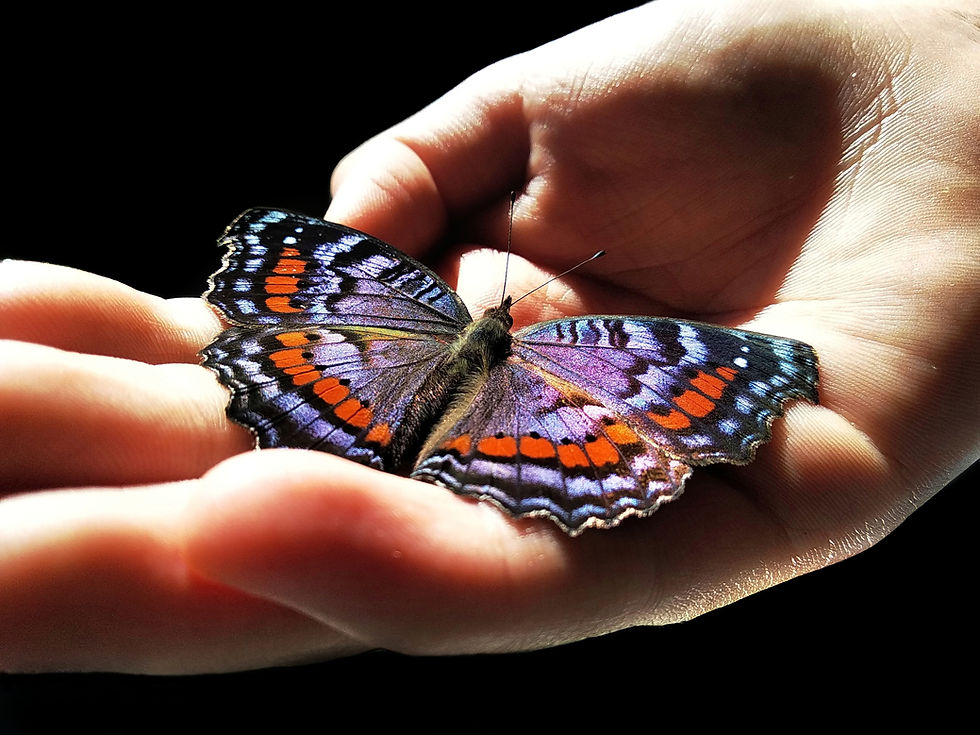Butterflies and Sacred Gardens: Teaching Kids to Appreciate the Cycle of Life
- Louisa Mastromarino
- Jul 11
- 3 min read
In a world increasingly dominated by technology and fast-paced living, it is imperative that we foster a deep appreciation for nature in our children. One poignant way to achieve this is through the exploration of butterflies and sacred gardens—symbolic manifestations of the cycle of life and the interconnectedness of all living things. This blog post delves into how we can ignite a sense of wonder about nature in children and help them understand the vital lessons embedded in its cyclical patterns.
The Life Cycle of Butterflies: A Lesson in Transformation
Butterflies, with their enchanting metamorphosis, provide a perfect entry point for discussing life cycles with children. Starting as eggs, these creatures undergo remarkable transformations through the larval (caterpillar) and pupal (chrysalis) stages before emerging as beautiful butterflies. This process is not just a wonder of nature; it mirrors broader themes of growth, change, and renewal.
According to acclaimed author and naturalist, David Attenborough, “The natural world is our greatest teacher, and observing it can give us profound insights into life” (Attenborough, 2017). When children observe the metamorphosis of butterflies, they learn about patience, the importance of change, and the beauty that can arise from seemingly challenging processes.
Creating a butterfly garden can be an excellent hands-on activity for families and schools alike. This garden can host various nectar-rich flowers that attract butterflies, serving as both an educational tool and a serene space for reflection. As children care for the garden, they can witness the delicate balance of ecosystems, fostering an appreciation for nature’s interdependencies.
The Significance of Sacred Gardens
Sacred gardens, often cultivated for meditation, reflection, and spiritual connectedness, provide another avenue to engage children with nature. These gardens symbolize the relationships we hold with the earth, nurturing a sense of responsibility and reverence for the environment.
Creating sacred spaces can instill values of stewardship and respect for nature in younger generations. By involving children in creating their own sacred garden—a space devoted to growth, biodiversity, and tranquility—they can develop a personal connection to the natural world.
Integrating Nature into Learning
Integrating outdoor activities with classroom learning can further enrich children's understanding of the natural cycles surrounding them. Curriculum initiatives that encourage exploration of local ecosystems, gardening, and wildlife observation can instill lifelong values. As Richard Louv argues in *Last Child in the Woods: Saving Our Children from Nature-Deficit Disorder*, spending time in nature is crucial for children’s physical and mental well-being and cultivates a sense of environmental stewardship (Louv, 2005).
The Deep Impact of Nature Appreciation
The appreciation for nature and understanding life cycles can lead to increased empathetic behavior in children. As they learn to value each stage of growth, they may become more compassionate and understanding individuals. Encouraging children to observe and document their findings about butterflies and gardens can further enhance their observational skills and foster a sense of curiosity about the world around them, aligning with the thoughts expressed by ecologist Edward O. Wilson in *Biophilia* (1984), where he emphasizes the innate connection humans share with nature.
In conclusion, immersing children in the wonders of butterflies and sacred gardens serves as a potent way to teach them about the cycle of life. By engaging in gardening, observation, and reflection, children can develop an abiding appreciation for nature and its intricate cycles. As we nurture this relationship, we not only enrich their childhood experiences but also cultivate the next generation of environmental stewards. Encouraging children to explore and cultivate their relationship with nature through the lens of butterflies and sacred gardens can transformative educational experience, providing them with insights that will last a lifetime.
References
Attenborough, D. (2017). *The Blue Planet: A Natural History of the Oceans*. London: BBC Books.
Louv, R. (2005). *Last Child in the Woods: Saving Our Children from Nature-Deficit Disorder*. Chapel Hill: Algonquin Books.
Wilson, E. O. (1984). *Biophilia*. Harvard University Press.
About the Author:
Louisa Mastromarino is a certified counselor educator. She holds a Bachelor of Arts Degree in Communications, a Master of Science Degree in School Counseling, and a post master’s degree in Supervision and Educational Leadership. Louisa is the author of Spifford Max and the Cycle Pups Go to Washington, D.C., and additional publications. Louisa's work has been highlighted in the noted publications Careers from the Kitchen Table by Raven Blair Davis and Miracles in the Divine by Beverly Pokorski. For appointments in life coaching email distantholistic@gmail.com. Thank you.
The information provided on this blog is for informational purposes only and does not constitute legal or professional counseling advice. We assume no liability for any information, errors or omissions.




Comments